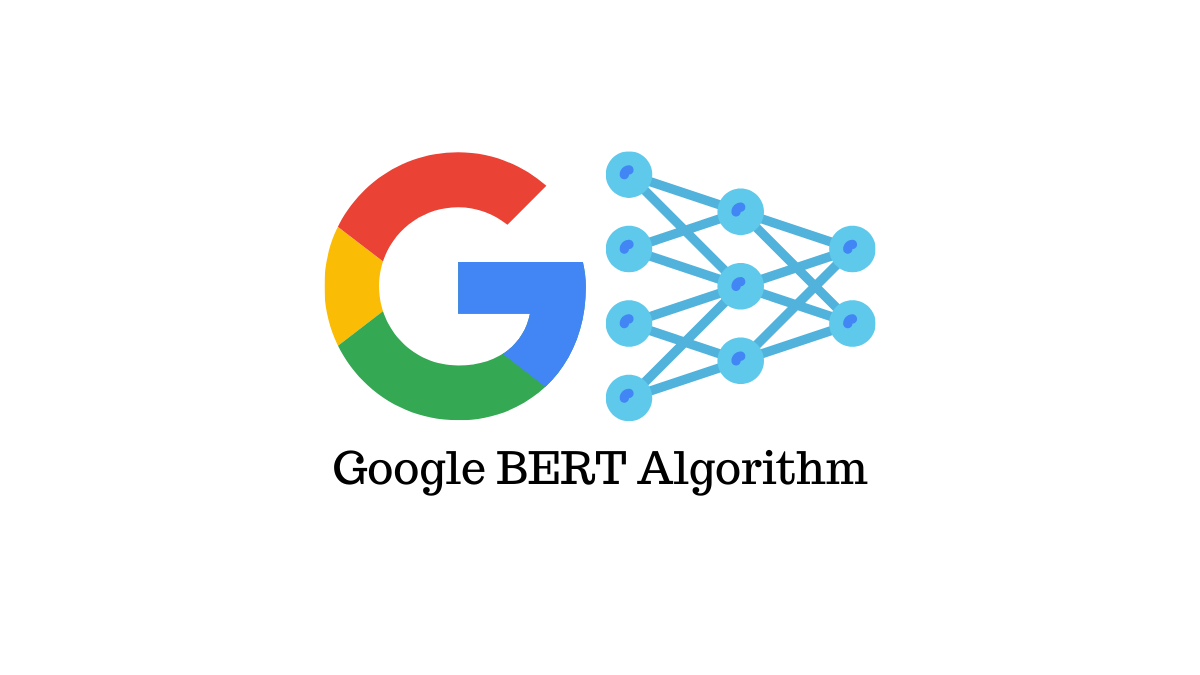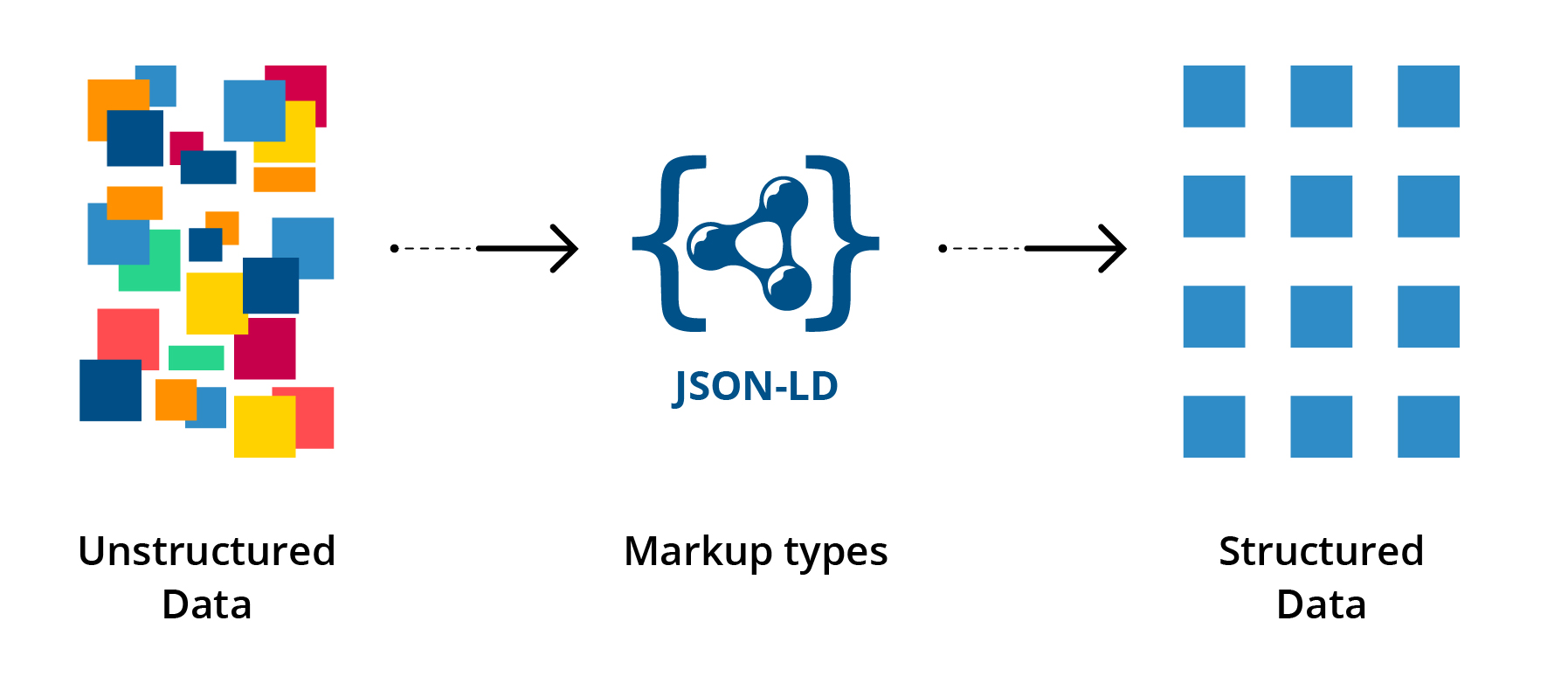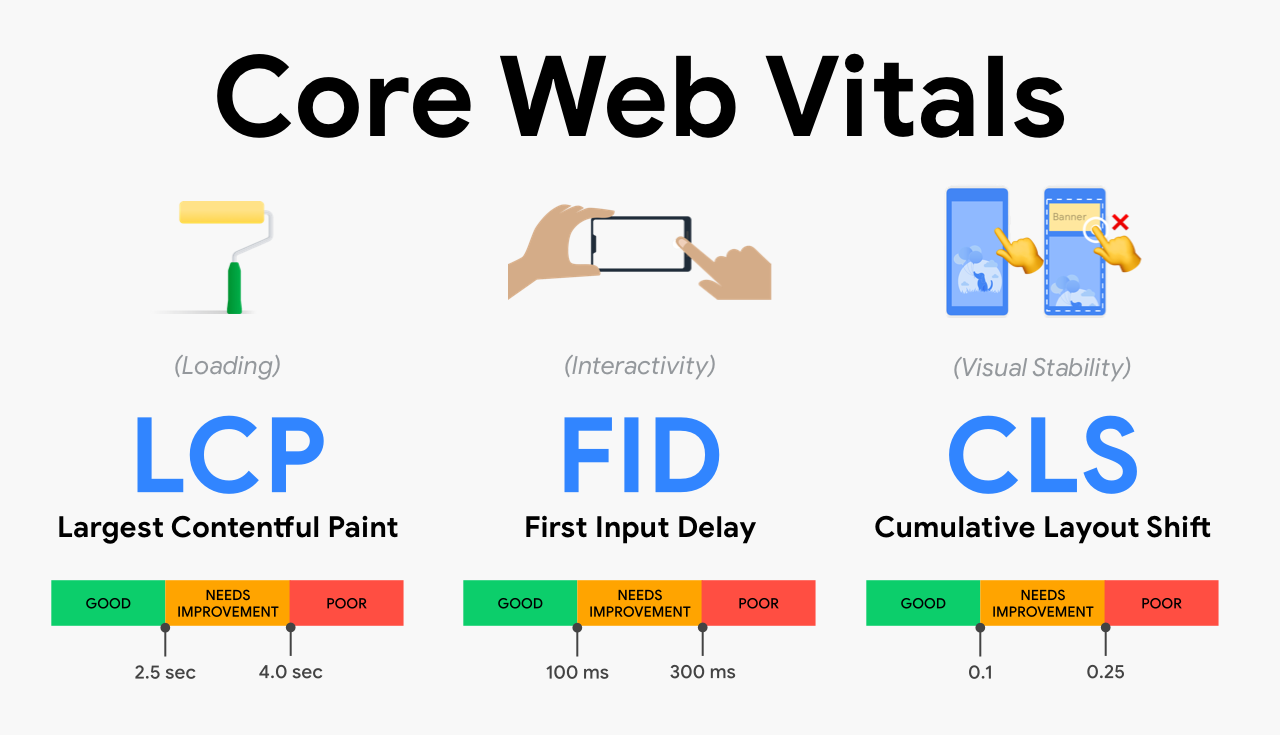
Search engine optimization is a complex and changeable field, and even experienced experts are sometimes caught off guard by the latest trends and changes. In this blog post, we will introduce the top 10 SEO problems that even experienced experts may not know about.
1. Understanding BERT: a change in the rules of the game
Google’s BERT algorithm is a major shift in the way search engines understand language. It pays attention to context and nuances, so you must create content that can fully answer users’ queries.

BERT (Bidirectional Encoder Representations from Transformers) is a natural language processing (NLP) algorithm developed by Google. It is a pre-trained language model designed to better understand and process text data. Let’s introduce the BERT algorithm in an easy-to-understand way and list the main points that webmasters need to pay attention to.
The goal of the BERT algorithm is to make the computer’s understanding of the text closer to the human level. It achieves this by pre-training large amounts of text data. During the preview, BERT learns how to predict missing words or phrases in the text. By predicting the words in the context, BERT can capture the relationship between words and sentences, thus better understanding the language.
Once BERT is pre-trained, it can be applied to a variety of NLP tasks, such as text classification, named entity recognition, question answering system and so on. In the application phase, the BERT model will be fine-tuned according to the needs of a specific task in order to better adapt to the goal of the task.
For webmasters, here are the main points that focus on the BERT algorithm:
- Content optimization: BERT has a better ability to understand search queries and web content. Webmasters should focus on providing high-quality, useful and easy-to-understand content. Ensure that the content is closely related to the target keywords and topics to improve the ranking of web pages in search results.
- Natural language processing: as BERT understands the language better, webmasters can consider applying it to natural language processing tasks, such as text generation, intention recognition, machine translation, etc. This helps to provide a better user experience and more accurate results.
- User intention: the powerful semantic understanding function of BERT helps to identify the user’s intention and query intention. Webmasters should focus on creating optimized content to meet the search intentions of different users and provide query-related and valuable information.
- Long-tailed keywords: BERT helps to better understand the meaning of long-tailed keywords and language fragments. Optimize the keyword strategy of the site and consider including long-tailed keywords and natural language queries to improve the visibility of the page in more specific user searches.
- Site architecture and internal links: BERT can understand the relationship between web text. Webmasters should focus on building a clear site structure and effective internal links to help BERT better understand the content and structure of the site.
To sum up, the BERT algorithm is an important development for Google, which enhances the computer’s ability to understand text through pre-training and fine-tuning. Webmasters should focus on optimizing content, keyword strategies, user intentions and site structure to adapt to the impact of the BERT algorithm and provide better user experience and search results.
two。 The power of latent semantic indexing (LSI) keywords
The LSI keyword helps search engines better understand your content topic. Naturally incorporating these keywords into the content can greatly improve the ranking.

Implicit semantic indexing (LSI) is a technology for information retrieval and text analysis. By analyzing the semantic relevance in the text, it classifies similar words and phrases into one category, so as to provide more accurate search results.
LSI works based on the mathematical method of singular value decomposition (SVD). It reduces the complexity of text features by converting the text into a numeric matrix, and then reducing the dimension of the matrix. The reduced matrix contains the latent semantic information in the text, that is, the meaning hidden behind words and phrases. In this way, LSI can capture the semantic relevance between texts, not just the literal meaning of words.
For webmasters, here are the main points of paying attention to LSI:
- Keyword optimization: LSI takes into account the semantic relationship between words, not just an exact match. Webmasters should focus on the use of multiple related keywords and phrases to improve the match between text and potential search queries. This helps to get better rankings and more accurate matching of user intentions in search engines.
- Content relevance: LSI helps search engines better understand text content. Webmasters should focus on providing high-quality, useful and relevant content to meet the search intentions of users. By providing in-depth content related to keyword topics, you can improve the visibility of the page in search results.
- Site structure and internal links: LSI takes into account the semantic relevance between texts. Webmasters should focus on building a clear site structure and an effective internal link structure to help search engines better understand the content and relevance of the site.
- User experience: providing valuable content relevant to potential search queries is critical to the user experience. With the help of the semantic relevance of LSI, webmasters can provide more comprehensive and diversified information to meet the search needs of users.
- Avoid keyword accumulation: LSI can identify the semantic relevance of keywords, so webmasters should be careful to avoid meaningless accumulation of a large number of keywords. Instead, focus on providing meaningful, relevant and fluent content.
To sum up, LSI is a technology that provides more accurate search results by analyzing semantic relevance in text. Webmasters should focus on keyword optimization, content relevance, site structure, user experience and avoiding keyword accumulation in order to adapt to the LSI algorithm and provide better search results and user experience.
3. Structured data markup: a Super weapon for search engine Optimization
The implementation of structured data tags can enhance the display effect of the website in the search results, provide users with more early information, and improve the click rate.

Structured data markup is a technology that uses a specific markup language on a web page to mark and describe the content of a web page. This tag enables search engines to better understand and interpret the content of web pages and provide richer and accurate search results.
Through structured data tags, webmasters can provide additional contextual information and meaning for specific parts of a web page. For example, you can mark key information on a web page, such as product name, price, score, comment, event date, and so on. Search engines can understand and explain the meaning of these data through these tags, and then provide richer and useful search results, such as displaying product prices, ratings and other information directly in the search results.
Webmasters need to pay attention to the following points to use structured data tags:
- Choose the appropriate markup format: common structured data markup formats include JSON-LD, Microdata, and RDFa. The webmaster should choose the tag format that suits his website and learn how to use it for tagging.
- Tag important content: tag important content on a web page, especially those that may have a significant impact on users or are related to a particular query. This can include product information, event date, location, and so on.
- Follow tagging guidelines: search engines provide guidelines and best practice documentation for structured data tagging. Webmasters should read and follow these guidelines carefully to ensure that the content of the web page is marked correctly.
- Testing and verification: before publishing the tag, the webmaster should test and verify the tag to ensure that the syntax of the tag is correct and can be correctly parsed by the search engine. Search engines provide tools and testing methods to verify the correctness of structured data tags.
- WYSIWYG editor: if you are using CMS (content management system) or website building platform, look for WYSIWYG editors that support structured data markup. This makes it easier to add and edit tags without having to write code manually.
In short, structured data tagging is a technology that helps search engines understand web content and provide richer search results. The webmaster needs to choose the appropriate tag format, mark the important content, follow the guidelines, test and verify, and use the WYSIWYG editor to simplify the marking process. This can improve the visibility and user experience of the site in search engine results.
4. Mobile priority Index: priority rather than selection
As most Internet traffic comes from mobile devices, ensuring that your site is optimized for mobile devices is a prerequisite for successful SEO.

Mobile-First Indexing (Mobility first Index) means that when indexing and ranking web pages, search engines first take the version on the mobile device as the main reference. As more and more users use mobile devices to search and browse the web, search engines take mobile friendliness as a key indicator to provide better search results and user experience.
The webmaster needs to pay attention to the following aspects to adapt to the mobile priority index:
- Mobile friendliness of the website: make sure your site is displayed and operated correctly on mobile devices. This means that the page layout should be adapted to small screens, text and button sizes should be appropriate, and flicker or incompatible content (such as Flash) should be avoided to ensure that users can navigate your site smoothly.
- Responsive design: responsive design is recommended to make your site adaptable to different screen sizes. In this way, users can get a consistent user experience, whether they are using a mobile phone, tablet, or desktop.
- Mobile web speed: make sure your site loads quickly on mobile devices. Mobile users are usually more sensitive to loading time, which may lead to the loss of users if the web page loads too slowly. Optimize the image, compress the file size, reduce the server response time and other operations can improve the loading speed of mobile web pages.
- Mobile content and metadata: make sure that your mobile web page provides the same or similar content as the desktop web page, including keywords, titles, descriptions, tags, etc. Search engines will use these elements to understand and rank your web pages.
- Mobile web links: make sure that the link structure of your mobile web page is consistent with that of your desktop web page. Make sure that search engines can correctly index and identify your mobile web pages and match them to relevant queries.
The mobile first index means that search engines pay more attention to web pages on mobile devices. Webmasters need to pay attention to mobile friendliness, responsive design, mobile web speed, mobile content and metadata, and mobile web links. These factors will help webmasters improve the mobile ranking and user experience of the site.
5. The importance of Core Web Vitals
Google’s Core Web Vitals measures users’ experience on the site. Paying attention to the factors such as page speed, interaction and visual stability can improve the search engine optimization performance of the website.

Core Web Vitals is a set of indicators to measure the user experience of a website, focusing on web page loading speed, interaction and visual stability. These indicators can help webmasters understand the real experience of users when visiting the site, and optimize the web page to provide a better user experience.
Webmasters need to pay attention to the following points to optimize Core Web Vitals:
- Largest Contentful Paint (LCP): measures how long it takes a user to display the largest chunk of content that a user sees during page loading. The webmaster should ensure that the web page loads quickly in a few seconds to avoid a long white screen or slow content loading.
- First Input Delay (FID): measures the responsiveness of a user’s interaction with a web page. The webmaster should ensure that the web page is sensitive to the user’s actions and avoid delayed response or stutters.
- Cumulative Layout Shift (CLS): measures the visual stability of a web page during loading. Webmasters should ensure that elements do not suddenly move or cause page layout confusion when loaded to provide a more stable user experience.
In order to optimize Core Web Vitals, webmasters can take the following measures:
- Optimize web page performance: including compressing images, reducing HTTP requests, optimizing code and scripts, etc., to speed up web page loading.
- Deferred loading content: for long pages or pages that contain a large number of pictures and videos, you can use the deferred loading technique to load only when the user scrolls to them.
- Responsive design: ensure that web pages are well rendered on different devices and adapt to different screen sizes and resolutions.
- Preload key resources: use appropriate preloading technology to load page resources that are closely related to user behavior in advance to reduce loading time.
- Monitoring and analysis: use tools to monitor the performance indicators of web pages and adjust and optimize them according to the data.
By focusing on Core Web Vitals and optimizing the site, webmasters can improve user experience, reduce page loading time, increase page stability, and improve user satisfaction and retention.
6. Nofollow links: a valuable search engine optimization strategy
Contrary to popular belief, nofollow links can still bring value to your SEO efforts, especially when building a variety of backlink profiles.

Nofollow links are attributes used in web code to tell search engines not to track or transmit the authority and ranking value of links. To put it simply, when a link is marked as Nofollow, the search engine does not regard it as a positive reference or recommendation to the linked page.
For webmasters, the following are the main points to pay attention to:
- Control traffic allocation: webmasters can use Nofollow links to control the frequency and traffic allocation of specific links crawled by search engine spiders (search engine programs). This is useful for protecting sensitive pages or preventing search engines from overaccessing certain content.
- Avoid passing authority on untrusted links: if there are links on the site from untrusted sources or user submissions, marking them as Nofollow can help prevent search engines from associating the authority of links with the site.
- Prevent being punished: search engines may punish certain violations (such as misuse of links). Using the Nofollow attribute can help webmasters avoid being identified by search engines as manipulating links and rankings.
- Optimize the internal link structure: webmasters can use Nofollow to control the weight distribution of internal links. This is very helpful to guide search engine spiders to better index and understand the important pages of the site.
- Collaboration and advertising links: when webmasters cooperate with other sites or display ads, use Nofollow to ensure that these links are not included in the authoritative calculation of rankings by search engines.
Note that the Nofollow link does not completely prevent the search engine from accessing the link’s target page, but it tells the search engine what to do with the link. Webmasters can choose the appropriate strategy for using Nofollow links according to their own needs and goals.
7. Google Discover: mining hidden gold mines
Google Discover is a powerful content discovery tool. Optimizing your content for “Discover” can increase awareness and traffic.

Google Discover is a feature of Google that aims to provide personalized content recommendations to users. It is a mobile application and service that integrates news, articles, videos and other web content. By analyzing users’ search history, browsing habits and interests, Google Discover presents relevant and valuable content for users, so that users can find new information and content without active search.
The webmaster needs to pay attention to the following points:
- Optimized content: webmasters should focus on providing high-quality, valuable and related content to the theme of their website. Google Discover prefers quality, practical and attractive content, so webmasters need to ensure that the content on the site meets the needs and interests of users.
- User experience: webmaster should focus on providing a good user experience. This includes the loading speed, mobile friendliness, readability and navigation of the website. Optimizing these factors can increase users’ satisfaction with the site and improve the opportunities for presentation in Google Discover.
- Structured data: webmasters can use structured data tags to help Google understand the content on the site. By providing more contextual information to the page, structured data can increase the chances of presentation in Google Discover and provide richer rendering methods, such as displaying information such as article title, release date, and author.
- Pictures and visual attractiveness: Google Discover usually displays attractive pictures and visual content. Webmasters can use high-quality images on their websites and make sure they are associated with content to increase exposure in Google Discover.
- Sharing and dissemination: webmasters can encourage users to share content on their sites on social media platforms. By increasing the social dissemination of website content, it helps to increase the exposure in Google Discover and the number of visits by users.
It should be noted that the Google Discover algorithm is based on the user’s personal interest and behavior for content recommendation, so the webmaster can not directly control the display in Google Discover. However, by focusing on the above points, webmasters can improve the opportunities for the site to display in Google Discover and attract more target users.
8. Video SEO: don’t stop at YouTube
Video content is booming, and it is very important to optimize video content for search engines. In addition to YouTube, you can consider platforms such as Vimeo and DailyMotion.

Video SEO is a way to optimize video content, which aims to improve the ranking and exposure of videos on search engine results pages. In addition to optimizing on YouTube, webmasters should also focus on other search engines and social media platforms to ensure that videos can be found and viewed by more people.
The webmaster needs to pay attention to the following points:
- Keyword research: keyword research is an important step in video SEO. Knowing the keywords and phrases that the target audience usually searches for can help webmasters choose appropriate titles, descriptions and tags to improve the ranking of videos in search results.
- Video title and description: webmasters should use attractive and relevant titles to describe the content of the video. The title should be concise and clear and contain key words as much as possible. The video description should provide more detailed information, including relevant keywords and a summary of the video content.
- Tags and categories: choosing the appropriate tags and categories for videos will help search engines and platforms understand the content and themes of videos. Webmasters should select tags related to video and use the appropriate classification provided by the platform.
- Thumbnails and visual appeal: design attractive video thumbnails to attract more users to click and watch. The picture should be clear, attractive and relevant to the video content.
- Video quality and length: providing high-quality video content is critical to attracting viewers. At the same time, make sure the length of the video is moderate, not too long or too short, so that users can watch it in its entirety and remain interested.
- Social media communication: webmasters can increase the exposure and viewing of videos by sharing videos on social media platforms. Optimize sharing titles, descriptions and thumbnails to attract users to click and share videos.
- Links and internal embedding: linking videos to related pages of the site can increase page traffic and video exposure. In addition, embedding video on related web pages also helps to improve the visibility of video.
- Video interaction and subscription: encourage viewers to interact with videos, such as likes, comments and sharing, which can increase video participation and ranking in search results. In addition, encouraging viewers to subscribe to your channel can increase the number of long-term viewers and video visibility.
By focusing on the above points, webmasters can maximize video content and improve visibility on search engines and social media platforms. This will help attract more viewers and increase the exposure and influence of the video.
9. The influence of voice search is increasing day by day.
With the popularity of voice activation devices, optimizing content for voice search is very important to the success of search engine optimization.

Voice search is a way to search through voice commands rather than keyboard input. It uses speech recognition technology to convert users’ voice instructions into text, and provides relevant search results according to these instructions.
Webmasters need to pay attention to the following points when optimizing voice search:
- Natural language keywords: voice search is closer to people’s usual oral expression, so the webmaster should optimize the content of the website to include more natural language keywords related to daily spoken language. This can improve the discoverability of the website in voice search.
- Long-tailed keyword optimization: since voice search is more likely to use complete phrases and questions for queries, webmasters should optimize long-tailed keywords. These keywords are usually specific problems or specific needs that users use in voice search.
- Structured data tags: the use of structured data tags can provide more contextual information related to search and help search engines better understand and interpret web content. This helps webmaster’s website to get better display and ranking in voice search.
- Fast load time: voice search users usually want to get answers or information quickly, so webmasters need to make sure that the site has a fast load time. This requires optimizing the site’s code, images, and server configuration to provide a faster user experience.
- Local search optimization: many voice searches are geographically related, such as “restaurants near me”, so webmasters should optimize local searches. This includes providing accurate contact information, geographic location, and business information on the website to meet the users’ local search needs.
- Mobile friendliness: voice searches are usually conducted through mobile devices, so webmasters need to ensure that the site has good responsiveness and user experience on mobile devices. This includes optimizing the page loading speed and layout design of mobile websites.
- Knowledge graphs and answer fragments: voice search often involves direct answers to specific questions, so webmasters can attract voice search traffic by providing useful knowledge graphs and answer fragments. This requires writing clear, concise content and using relevant tags and structures to highlight the point.
- User intention understanding: voice search is usually closely related to the user’s intention, and the webmaster needs to understand and meet the user’s specific intentions and needs in the voice search. This includes information that optimizes the content of the site to provide practical answers, solve problems, and meet the needs of users.
By paying attention to these key points, webmasters can better optimize their websites to adapt to the growing trend of voice search and improve the visibility and user experience of the site in voice search.
10. Uncover the secrets of local search engine optimization
Local search engine optimization can determine the success or failure of entity enterprises. Learn about effective strategies that dominate local search results.

Now that we have explored these ten fascinating aspects of SEO, it is clear that even experienced professionals can benefit from a new perspective. By knowing the information and adapting to the ever-changing SEO environment, you can ensure that your site always ranks top and attracts more natural traffic.
Local search engine Optimization (Local SEO) is an optimization strategy designed to improve the ranking and visibility of websites in local search results to attract more local users. It is mainly aimed at enterprises or organizations that want to attract potential customers in a specific geographical area.
Webmasters need to pay attention to the following points when conducting local search engine optimization:
- Google my Enterprise Page: create and improve your Google my Enterprise Page to provide accurate and consistent basic information (such as name, address, phone number) as well as business hours, pictures and descriptions. Make sure your business appears on the Google map and contains the correct location information.
- Local keyword optimization: use keywords related to your region to optimize your site’s content, including in titles, meta tags, page content, and URL. This helps to improve your site’s ranking in locally relevant search queries.
- Local directories and business lists: register your business information in your local online directories and business lists and ensure that the information is consistent and accurate. These can include industry catalogs, local chambers of commerce, yellow pages, etc.
- User reviews and ratings: actively encourage users to provide reviews and ratings for your business and respond to them. Comments and ratings can increase your business’s credibility and attractiveness in local search results.
- Localize content and pages: locate your site’s content, including providing locally relevant information, activities, news and resources, etc. Create pages tailored to the local community and make sure they provide useful information to local search engines and users.
- Geographic tags and structured data: use structured data tags (such as Schema.org) to mark your business information, including address, phone number, business hours, etc. This helps search engines better understand your business information and present more detailed results in local searches.
- Mobile-friendly and responsive design: ensure that your site has a good user experience on mobile devices and use responsive design to accommodate all screen sizes and device types. This is particularly important because more and more local searches are conducted through mobile devices.
- Local community participation and trust building: actively participate in local community activities and events, establish partnerships with other local businesses, and strive for local media coverage. This helps to increase the local visibility and trust of your business.
By paying attention to these key points, webmasters can better optimize local search engines and make their websites gain higher ranking and exposure in local search results, thus increasing the visit and conversion rate of local users.
More skills
Use robots.txt to guide search engine crawlers
The robots.txt file is an IMP tool that indicates which URL on your site can or cannot be accessed by search engine crawlers. This file is usually located in the root directory of the domain name of the website. For example, if your Web site is www.example.com, you can find the robots.txt file at www.example.com/robots.txt. It is important to note that the format of the robots.txt file is plain text and follows the convention of the Robots exclusion standard.
In a robots.txt file, you can define one or more rules, each of which specifies whether to allow or restrict access to a specific file location on the same domain or subdomain as the robots.txt file. By default, if you do not add specific instructions to the robots.txt file, the search engine crawler will assume that all files are accessible and crawled.
Configure the search page for link tracking, but no index
Search engines are usually reluctant to direct users to internal search results pages. However, the links on these search results pages are of great value, and it is important to ensure that search engines track these links. For this reason, it is recommended that you configure the robots meta tag as follows:
This configuration instructs search engines not to index page content (noindex), while allowing search engines to track and grab links in pages (follow). In addition, it sets the maximum image preview size (max-image-preview:large) for search results and reiterates the indexing directive (index).
Add more tips here in a few days.
Summary
Search engine optimization is a dynamic field, and keeping ahead is the key to success. By implementing these little-known search engine optimization strategies, you can take optimization to a new level. Keep in mind that the digital environment is constantly changing, so be prepared to adapt to and accept new SEO technologies.
common problem
1. What is BERT and why is it important for SEO?
BERT is a Google algorithm that focuses on understanding the context and nuances of user queries. It is critical to search engine optimization because it rewards content that can fully answer users' questions.
two。 How to optimize a website for mobile priority indexing?
To optimize for mobile priority indexes, ensure that your website is responsive, loads quickly on mobile devices, and provides a seamless user experience on smartphones and tablets.
3. What is Core Web Vitals and how do they affect search engine optimization?
Core Web Vitals is a user experience indicator that Google takes into account when ranking websites. They include page speed, interactivity, and visual stability. Optimization according to these indicators can improve the performance of search engine optimization.
4. Is nofollow link valuable to search engine optimization?
Yes, nofollow links can still provide value for SEO. Although they do not pass PageRank, they can contribute to a variety of backlink profiles and bring recommended traffic.
5. How to optimize content for voice search?
In order to optimize voice search, we should pay attention to natural language, use long-tailed keywords, and provide concise and detailed answers to common questions raised by users using voice assistants.

